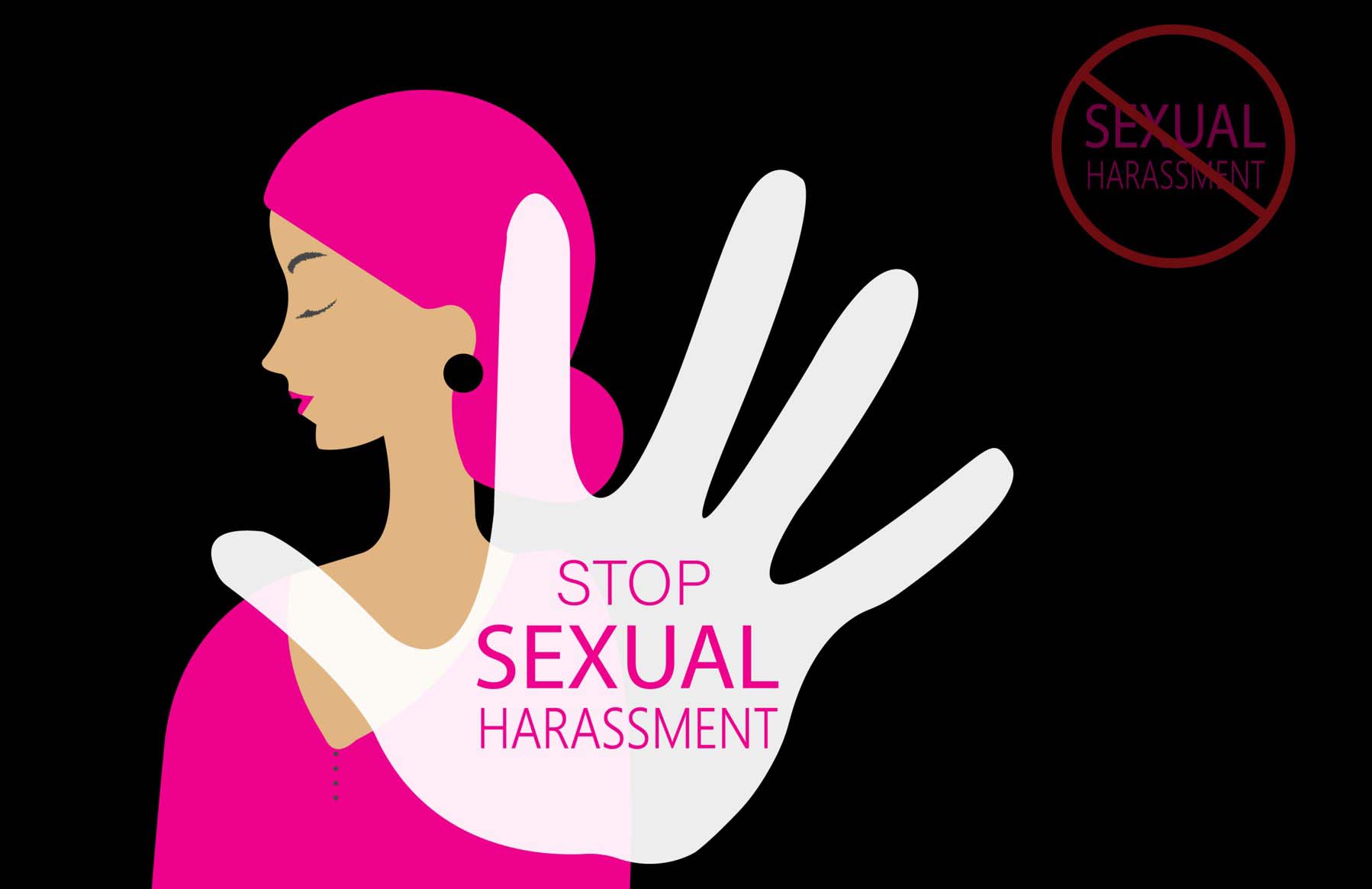Workplace Harassment California: Prevention Guide
Employment attorney’s guide on how to prevent and investigate reports of harassment, including sexual harassment.
By Douglas Wade, Attorney
Email | Call (800) 484-4610
California’s Fair Employment and Housing Act (FEHA) is a state law that prohibits discrimination, harassment, and retaliation in employment and housing. It is designed to protect individuals from unfair treatment based on protected characteristics such as race, color, religion, sex, national origin, disability, and others.
The Department of Fair Employment and Housing (DFEH) is the state agency responsible for enforcing the provisions of the FEHA. The DFEH investigates complaints of discrimination, harassment, and retaliation filed by individuals and takes appropriate action to address violations of the law. It also provides educational resources, guidance, and outreach programs to promote compliance with the FEHA.
That is to say, the FEHA establishes the legal framework and protections against discrimination, harassment, and retaliation in California, while the DFEH acts as the enforcement agency responsible for upholding and implementing the FEHA’s provisions.
In this article, our sexual harassment defense attorney in Los Angeles discusses how to prevent and investigate harassment complaint as follows:
What does an effective workplace anti-harassment progress look like?
An effective workplace anti-harassment program typically includes several key components to prevent and address instances of harassment. While specific programs may vary, here are some common elements found in effective workplace anti-harassment programs:
- Written Policies: Clear and comprehensive policies that explicitly state the organization’s commitment to maintaining a harassment-free workplace. These policies should define harassment, provide examples, outline reporting procedures, and specify the consequences for violations.
- Training: Regular training sessions for all employees, including supervisors and managers, to educate them about what constitutes harassment, how to prevent it, and how to respond appropriately if they witness or receive a complaint. Training should cover topics such as recognizing harassment, reporting procedures, and bystander intervention.
- Reporting Mechanisms: Establishing multiple reporting channels, such as anonymous hotlines, dedicated email addresses, or confidential reporting systems, to ensure employees have various options to report incidents of harassment without fear of retaliation. The program should also include a clear process for handling and investigating complaints in a prompt and confidential manner.
- Investigation Procedures: A well-defined process for investigating harassment complaints, including assigning impartial investigators, conducting thorough and fair investigations, documenting findings, and taking appropriate action based on the investigation’s results.
- Support and Remedies: Providing support and resources to victims of harassment, such as counseling services or legal assistance, and ensuring appropriate remedies for victims, which may include disciplinary actions against perpetrators, implementing corrective measures, or providing training and education to prevent future incidents.
- Regular Communication and Awareness: Promoting ongoing communication and awareness of the anti-harassment program through regular reminders, updates, and educational materials. This helps to reinforce the organization’s commitment to maintaining a harassment-free workplace and encourages employees to stay vigilant against harassment.
- Accountability and Enforcement: Holding individuals accountable for their actions and enforcing the policies and consequences outlined in the anti-harassment program consistently and fairly. This includes taking appropriate disciplinary action against harassers, providing additional training when necessary, and regularly evaluating and improving the program’s effectiveness.
What should an employer do about a report of harassment?
When an employer receives a report of harassment or other wrongful behavior, it is essential to respond promptly and take appropriate action. Here are the general steps that an employer should follow:
- Document the Report: Maintain a written record of the report, including the date, time, and details of the alleged incident(s) or behavior. Encourage the individual making the report to provide as much information as possible, such as names of individuals involved, witnesses, dates, times, and any supporting evidence.
- Ensure Confidentiality: Assure the person making the report that their privacy and confidentiality will be respected to the extent possible, while also explaining that the employer has an obligation to investigate and take appropriate action.
- Initiate an Investigation: Designate a competent and impartial investigator to conduct a thorough and fair investigation. This investigator should have the necessary training and experience to handle such matters objectively.
- Gather Evidence: Interview the complainant, alleged harasser, and any witnesses who may have relevant information. Request any supporting documentation or evidence that can help substantiate the claims or provide additional context.
- Take Appropriate Interim Measures: If necessary, implement interim measures to ensure the safety and well-being of the complainant and prevent further incidents, such as separating the parties involved, adjusting work schedules, or providing support resources.
- Analyze the Findings: Review the collected evidence and assess whether the behavior in question violates company policies or applicable laws. Determine the credibility and weight of the evidence and assess the severity of the alleged misconduct.
- Implement Corrective Actions: If the investigation supports the allegations, take appropriate disciplinary action against the harasser or wrongdoer. The severity of the misconduct and any previous incidents should guide the decision on the appropriate corrective measures, which may include counseling, retraining, transfers, suspensions, or termination, as warranted.
- Communicate with the Parties Involved: Inform the complainant and alleged harasser about the investigation’s outcome and the actions taken. Reiterate the company’s commitment to maintaining a harassment-free workplace and emphasize that retaliation against the complainant or any witnesses will not be tolerated.
- Review and Evaluate: After addressing the immediate situation, evaluate the effectiveness of the employer’s anti-harassment policies, procedures, and training. Identify any systemic issues that need to be addressed and take steps to prevent future incidents.
What are the steps of a workplace harassment investigation?
Conducting a fair workplace harassment investigation involves a systematic and objective approach to gathering information, assessing evidence, and reaching conclusions. The following are the steps typically involved in conducting such an investigation:
- Prompt Response: Respond to the complaint promptly and take immediate steps to address any immediate safety concerns or potential risks to the involved parties.
- Choose an Impartial Investigator: Select an investigator who is unbiased, impartial, and has the necessary knowledge, skills, and training to conduct a thorough investigation. The investigator should have no personal or professional conflicts of interest with the parties involved.
- Plan the Investigation: Develop an investigation plan outlining the scope, objectives, and timeline of the investigation. Identify the individuals who need to be interviewed, any relevant documents or evidence to be collected, and the overall investigative process.
- Interview Complainant: Conduct a private and confidential interview with the individual who made the complaint. Allow them to provide a detailed account of the alleged harassment or misconduct. Encourage them to provide any supporting evidence or witnesses, if available.
- Interview Witnesses: Interview any witnesses identified by the complainant or discovered during the investigation. Ask open-ended questions to gather relevant information about the incident(s) and any other relevant details.
- Interview the Respondent: Interview the person against whom the complaint is filed, allowing them an opportunity to present their side of the story and respond to the allegations. Give them a fair chance to provide their perspective, present evidence, and identify any witnesses who can support their position.
- Collect and Review Evidence: Gather any relevant documentation, such as emails, text messages, or other records that may support or refute the allegations. Review any policies, procedures, or other relevant materials that can help assess the situation.
- Assess Credibility and Relevance: Evaluate the credibility of the parties involved, the consistency of their statements, and the relevance of the evidence collected. Consider any potential biases or motives that may influence their credibility.
- Analyze the Findings: Based on the evidence and statements collected, objectively analyze the facts of the case. Determine whether the alleged conduct meets the legal definition of harassment or any policy violations. Consider any applicable legal standards or precedents.
- Prepare a Written Report: Document the investigation’s findings, including a summary of the allegations, the evidence reviewed, the witness statements, and the investigator’s analysis. Present a clear and concise report that includes a conclusion regarding whether harassment or policy violations occurred.
- Take Appropriate Action: If the investigation substantiates the allegations, take appropriate disciplinary or corrective action against the perpetrator. Consider the severity of the conduct, any previous incidents, and the organization’s policies and procedures.
- Follow-Up and Documentation: Communicate the investigation’s outcome to the parties involved, ensuring confidentiality to the extent possible. Document all the steps taken, including interviews conducted, evidence reviewed, decisions made, and any corrective actions implemented.
Can a workplace harassment investigation be kept private?
According to the California Department of Fair Employment and Housing (DFEH), workplace harassment investigators should strive to maintain confidentiality during the investigation process. However, it is important to note that complete confidentiality may not always be possible due to various factors, such as legal requirements and the need to gather relevant information and statements from involved parties.
While the DFEH acknowledges the importance of confidentiality, it also emphasizes the need to balance confidentiality with the employer’s legal obligations to investigate and take appropriate action. This means that the investigator may need to disclose certain information to relevant parties, such as the complainant, witnesses, and the alleged harasser, as part of the investigative process.
It is crucial for investigators to inform the parties involved about the limitations of confidentiality and the need to disclose information on a need-to-know basis during the investigation. Maintaining the privacy and confidentiality of the individuals involved to the extent possible is crucial to protect their rights and encourage open reporting.
Employers and investigators should consult legal professionals and familiarize themselves with applicable laws and regulations to ensure compliance and strike an appropriate balance between confidentiality and the necessary investigation process.
Are employees allowed to talk about a harassment claim?
Technically, a California employer can instruct employees not to discuss the details of a harassment investigation under certain circumstances. However, this instruction should be approached with caution and must be balanced with employees’ rights under the law.
Employers may have legitimate reasons for requesting confidentiality during an ongoing harassment investigation, such as protecting the integrity of the investigation, preserving the privacy of individuals involved, or preventing potential retaliation. Discussing the investigation openly could potentially compromise the process, intimidate witnesses, or hinder the collection of accurate information.
The National Labor Relations Act (NLRA) protects employees’ rights to engage in protected concerted activity, which includes discussing terms and conditions of employment. Therefore, employers should avoid implementing broad policies that unreasonably restrict employees’ ability to discuss workplace harassment or other work-related matters, as such policies may violate employees’ rights under the NLRA.
Employers should tailor their instructions on confidentiality to the specific circumstances of the investigation, making it clear that the instruction is meant to ensure the integrity of the process and protect the parties involved. Confidentiality should be balanced with employees’ rights to discuss work-related issues and report misconduct.
How quickly does a workplace harassment investigation need to be performed?
There is no specific timeline set in stone for conducting and completing a workplace harassment investigation under California law. The time required for an investigation can vary depending on various factors, including the complexity of the case, the number of witnesses, the availability of evidence, and the cooperation of the parties involved.
However, it is generally recommended to conduct workplace harassment investigations promptly and with due diligence. Delaying an investigation can have negative consequences, such as allowing the alleged misconduct to continue, potentially causing harm to the affected parties, and undermining the credibility of the investigation.
The California Department of Fair Employment and Housing (DFEH) suggests that employers should strive to complete investigations in a timely manner. They encourage employers to take immediate action upon receiving a harassment complaint, promptly begin the investigation, and conduct it with reasonable promptness.
While there is no specific timeline mandated by law, employers should aim to conduct investigations in a reasonable and timely manner, balancing the need for thoroughness with the goal of resolving the matter promptly. It is advisable to consult legal professionals or experts in human resources to ensure compliance with any applicable legal requirements and to establish internal policies and procedures that align with best practices for conducting timely investigations.
Why is impartiality important in workplace investigations?
Impartiality is essential to ensure that all parties involved in the investigation are treated fairly and without bias. It establishes trust in the process and helps to maintain the integrity of the investigation. It also allows investigators to approach the investigation with objectivity, free from personal opinions or preconceived notions. This helps in gathering and analyzing evidence, making informed decisions, and reaching fair conclusions based on the facts.
An impartial investigator is better positioned to protect the rights of all parties involved, including the complainant, the alleged harasser, and any witnesses. By maintaining impartiality, investigators can ensure that individuals are given a fair opportunity to present their side of the story and that their rights are respected throughout the process.
Maintaining an unbiased viewpoint also helps to prevent conflicts of interest that could compromise the investigation’s integrity. Investigators should not have personal relationships or vested interests that could impact their ability to make impartial decisions. This works to increase the credibility of the investigation process. When employees perceive that investigations are conducted impartially, they are more likely to trust the process and have confidence in its outcomes.
There is also a reduced risk of legal challenges or accusations of biased investigations. A well-documented and impartial investigation can demonstrate that the employer took appropriate and reasonable steps to address harassment complaints, minimizing the potential for legal liability.
To maintain impartiality, employers should consider utilizing internal investigators who have received appropriate training on conducting investigations and are free from conflicts of interest. Alternatively, they can engage external investigators or seek the assistance of legal professionals to ensure impartiality and compliance with relevant laws and regulations.
Overall, impartiality in workplace harassment investigations is crucial to uphold fairness, protect the rights of all parties involved, and maintain the credibility and integrity of the investigation process.
Are workplace harassment investigators necessary?
Qualifications and training for a workplace harassment investigator are essential to ensure a thorough, effective, and fair investigation.
Investigators should have a solid understanding of federal, state, and local laws related to workplace harassment, as well as the company’s policies and procedures. This includes familiarity with anti-discrimination laws, harassment prevention regulations, and any specific requirements for conducting investigations.
Investigators should possess strong investigative skills, including the ability to gather evidence, interview witnesses, analyze information, and make sound judgments. They should be able to navigate complex situations, assess credibility, and identify relevant facts.
They must demonstrate impartiality and objectivity throughout the investigation process. They should be able to set aside personal biases or conflicts of interest to ensure fair and unbiased assessments.
Effective communication skills are essential for conducting interviews with complainants, witnesses, and alleged harassers. Investigators should be skilled in active listening, asking open-ended questions, and obtaining relevant information while maintaining confidentiality and sensitivity.
Also necessary are strong writing skills, which will be used to document their findings, prepare detailed reports, and articulate their conclusions effectively. Clear and concise documentation is crucial for record-keeping, compliance, and potential legal purposes.
A good understanding of legal and ethical principles is necessary to ensure investigations comply with applicable laws, regulations, and organizational policies. This includes knowledge of privacy rights, confidentiality requirements, and the legal standards for harassment and discrimination.
Investigators should receive comprehensive training in investigative techniques, such as evidence collection, witness interviewing, analysis, and report writing. This training should cover best practices for conducting investigations, understanding the dynamics of harassment, and addressing issues related to bias and credibility.
Workplace harassment laws and best practices are continuously evolving. Therefore, investigators should engage in ongoing professional development to stay updated on changes in the legal landscape, emerging trends, and advancements in investigative techniques.
It is important for organizations to invest in training their internal investigators or consider utilizing external investigators who possess the necessary qualifications and training. Consulting with legal professionals or experienced investigators can help in developing appropriate training programs and ensuring compliance with legal requirements.
What type of questioning should an investigator use?
A workplace harassment investigator should use effective questioning techniques to gather relevant information, assess credibility, and obtain a comprehensive understanding of the situation. Here are some key types of questioning that investigators typically employ:
- Open-Ended Questions: Open-ended questions encourage individuals to provide detailed and descriptive responses. These questions cannot be answered with a simple “yes” or “no” and allow the interviewee to provide their perspective and share relevant information. Examples of open-ended questions include:
- “Can you describe what happened during the incident in question?”
- “Tell me about your interactions with the individual involved.”
- “How did the behavior make you feel?”
- Probing Questions: Probing questions are used to delve deeper into specific details or clarify ambiguous statements. They help to obtain additional information and ensure a comprehensive understanding of the facts. Examples of probing questions include:
- “Can you provide more specific details about the timing of the incident?”
- “What did the person say or do that made you feel uncomfortable?”
- “Are there any other witnesses who might have observed the incident?”
- Closed-Ended Questions: While open-ended questions are valuable for eliciting detailed responses, closed-ended questions are useful for seeking specific information or confirming details. These questions typically require a brief, direct response, such as “yes” or “no.” Examples of closed-ended questions include:
- “Did you witness the incident?”
- “Did anyone else observe the behavior?”
- “Was this the first time you experienced such behavior?”
- Hypothetical Questions: Hypothetical questions can be employed to explore potential scenarios or to test consistency in the statements of different witnesses. These questions can help assess credibility and determine how individuals might respond in certain situations. Examples of hypothetical questions include:
- “How do you think you would have reacted if this incident had occurred in a public setting?”
- “What would you have done differently if you were in a position of authority?”
- “If a similar incident were to occur, how do you think the organization should respond?”
- Sequential Questions: Sequential questions are used to establish a timeline of events or to clarify the sequence of actions. They help to ensure a clear understanding of the chronological order of the incidents being investigated. Examples of sequential questions include:
- “Can you walk me through the events leading up to the incident?”
- “What happened immediately after the incident occurred?”
- “Did you report the incident to anyone, and if so, who and when?”
It is important for investigators to actively listen, take notes, and adapt their questioning approach based on the specific circumstances and the responses they receive. Creating a safe and respectful environment during interviews is crucial to encourage open and honest communication.
How can an investigator assess credibility?
Assessing credibility is a crucial aspect of a workplace harassment investigation, particularly in he said/she said situations where there are conflicting accounts and no conclusive evidence. Here are some factors that workplace harassment investigators typically consider when assessing credibility:
- Consistency: Investigators assess the consistency of statements provided by the parties involved. They look for consistency in the core details and the overall narrative provided by each individual. Consistency can lend credibility to a person’s account, while significant inconsistencies may raise doubts.
- Demeanor and Non-Verbal Cues: Observing the demeanor and non-verbal cues of the individuals being interviewed can provide valuable insights. Investigators consider factors such as body language, tone of voice, and emotional reactions. Inconsistencies between verbal and non-verbal cues may impact credibility.
- Corroboration and Supporting Evidence: Investigators explore whether there is any corroborating evidence or witnesses that can support or refute the allegations made. Corroborating evidence can enhance the credibility of an individual’s account, while the absence of supporting evidence may require careful evaluation.
- Motive and Bias: Investigators examine potential motives or biases that individuals involved may have. Personal conflicts, animosity, or hidden agendas can influence credibility. Investigating any potential bias or motive is essential to understanding the context of the allegations and the potential impact on credibility.
- Past Behavior and Reputation: Investigators consider the past behavior and reputation of the individuals involved, particularly if there is a pattern of similar allegations or prior incidents. Past behavior can provide context and influence credibility assessments.
- Plausibility and Probability: Investigators evaluate whether the allegations and explanations provided by each party are plausible and align with common sense or known facts. They consider whether the events described are likely to have occurred based on the available information.
- Veracity of Statements: Investigators assess the overall veracity and reliability of the statements provided. They consider factors such as specificity, level of detail, and the presence of corroborating facts. Inconsistencies, contradictions, or omissions in statements may impact credibility.
- Independent Witnesses or Evidence: If there are independent witnesses or other types of evidence, investigators assess their credibility and the consistency of their accounts. Independent witnesses or evidence that support one account over another can be influential in credibility assessments.
How can an investigator decide what is the truth?
Workplace investigators often operate on a “preponderance of evidence” standard when conducting investigations into workplace harassment or misconduct. The preponderance of evidence standard is commonly used in cases related to employment discrimination and harassment.
Under the preponderance of evidence standard, investigators assess whether it is more likely than not that the alleged misconduct occurred. In other words, they weigh the evidence and determine if there is a greater than 50% chance that the allegations are true.
This standard is used because workplace investigations are typically administrative or civil in nature rather than criminal. It allows investigators to make determinations based on the available evidence, considering the credibility, consistency, and corroboration of the information obtained during the investigation.
Notably, the preponderance of evidence standard does not require absolute certainty or proof beyond a reasonable doubt, which is the higher standard used in criminal cases. Instead, workplace investigators aim to gather sufficient evidence to make a reasonable determination based on the balance of probabilities.
Operating on the preponderance of evidence standard helps to ensure that investigations are conducted fairly, provide a reasonable resolution, and allow employers to take appropriate action to address workplace misconduct.
Can an investigator reach a legal conclusion?
It is important for workplace investigators not to reach legal conclusions because their role is to conduct impartial fact-finding investigations rather than serving as legal adjudicators.
Investigators and legal professionals have distinct roles and responsibilities. Investigators focus on gathering facts, analyzing evidence, and reaching factual determinations, while legal professionals interpret the law, provide legal advice, and make legal judgments. Mixing these roles can compromise the integrity of the investigation process.
Workplace investigators are typically trained in conducting investigations, gathering evidence, and assessing credibility. They may not have the same level of legal expertise as attorneys who specialize in employment law. By deferring legal conclusions to professionals who are qualified in that domain, investigators can ensure accuracy and mitigate legal risks.
Also, workplace investigators may inadvertently introduce bias or error if they attempt to apply legal principles without the necessary legal expertise. Legal conclusions require a thorough understanding of complex legal statutes, case law, and legal precedents, which investigators may not possess. Relying on legal professionals helps minimize the risk of bias and ensures accurate legal interpretations.
Reaching legal conclusions without the appropriate legal training and qualifications can lead to procedural errors, potential violations of due process, or improper handling of legal requirements. Investigators must follow established legal procedures, and seeking legal advice when necessary helps ensure compliance with legal standards.
Workplace investigations involve sensitive matters, and reaching legal conclusions without proper legal guidance can expose investigators and employers to legal liability. Incorrect legal interpretations or decisions may result in legal challenges, complaints, or potential litigation. Engaging legal professionals helps minimize legal risks and ensures compliance with legal obligations.
To maintain the integrity and effectiveness of the investigation process, workplace investigators should focus on gathering facts, assessing credibility, and reaching factual determinations. Seeking legal advice and involving legal professionals when necessary can help ensure accurate legal interpretations, protect the rights of all parties involved, and mitigate legal risks for the organization.
What kind of documentation should be kept in an investigation?
Workplace harassment investigators should maintain comprehensive documentation throughout the investigation process. Documentation serves several purposes, including ensuring accuracy, preserving a record of the investigation, and providing a defense in case of legal challenges. The following are some key types of documentation that investigators should maintain:
- Complaint or Incident Reports: Investigators should document the initial complaint or incident report that triggered the investigation. This document should capture relevant details, including the date, time, location, description of the incident, individuals involved, and any supporting evidence provided.
- Investigation Plan and Scope: It is essential to document the investigation plan, outlining the scope, objectives, and the investigative steps to be taken. This helps guide the investigation and ensures thoroughness.
- Interview Summaries: Document detailed summaries of all interviews conducted with complainants, alleged harassers, witnesses, and any other relevant individuals. Include the date, time, location, and participants involved in each interview. Capture key statements, responses to specific questions, and any additional information obtained during the interviews.
- Evidence and Supporting Documents: Document any physical evidence, such as emails, text messages, photographs, or other relevant materials collected during the investigation. Maintain a record of the evidence, including how it was obtained and its relevance to the investigation.
- Witness Statements: Record witness statements verbatim or in summary form, capturing their perspective and any relevant information they provide. Ensure that witness statements are obtained voluntarily and with their consent.
- Documentary Evidence: Maintain copies or references to any relevant documents, policies, procedures, or other records that support the investigation, including employee files, performance evaluations, or prior complaints.
- Investigation Timeline: Create a timeline that chronologically outlines the key events, incidents, and actions taken during the investigation. This helps to establish a clear sequence of events and provides a comprehensive overview of the investigation process.
- Analysis and Findings: Document the analysis of the collected evidence, the credibility assessments, and the investigator’s findings. Clearly state the conclusions reached based on the preponderance of evidence standard and provide a rationale for the determinations made.
- Recommendations and Actions Taken: Document any recommendations or actions taken as a result of the investigation, such as disciplinary actions, training, policy revisions, or remedial measures implemented to address the issue.
- Confidentiality and Privacy Considerations: Maintain documentation that addresses confidentiality and privacy concerns, ensuring that sensitive information is appropriately protected and accessible only to those involved in the investigation.
What should an employer do if the victim does not want to do anything?
If the target of harassment asks their employer not to take any action, it is important for the employer to approach the situation with sensitivity and care.
He or she should ake the time to actively listen to the concerns and wishes of the target of harassment. The employer should acknowledge their perspective and validate their feelings. It is important to create a safe and supportive environment where they feel comfortable expressing themselves.
The employer should then clearly explain the company’s legal obligations and the seriousness of addressing workplace harassment. The individual must understand that the employer has a duty to provide a safe and respectful work environment for all employees. Taking appropriate action is necessary to prevent further harm and ensure compliance with legal requirements.
The next step would be to provide a clear explanation of the investigation process and the steps that will be taken. The employee should be informed that an investigation is necessary to gather facts and determine the appropriate course of action. They should be assured that their concerns will be taken seriously and that their confidentiality and privacy will be respected to the extent possible.
It is recommended to offer support resources available within the organization, such as employee assistance programs, counseling services, or HR representatives who can provide guidance and assistance. The individual should be encouraged to utilize these resources to help them cope with the situation and provide emotional support.
While it is crucial to address workplace harassment, employers must also respect an individual’s autonomy and decisions within the boundaries of legal obligations. They should discuss available options and potential consequences to help the person make an informed decision. However, an employer should be clear about the limitations of what can be done if they choose not to proceed with a formal investigation.
Even if the target requests no action, the employer should monitor the situation closely. They should keep an open line of communication and regularly check in to ensure the individual’s well-being. If the harassment continues or escalates, it may become necessary to intervene further to protect the employee and address the issue appropriately.
How do you handle anonymous workplace complaints?
Investigating anonymous workplace complaints can be challenging since identifying the complainant is not possible. However, there are steps you can take to conduct a thorough investigation.
First, carefully document the details of the anonymous complaint, including the date, time, nature of the complaint, and any specific incidents or individuals mentioned. Preserve any supporting evidence or documentation provided with the complaint.
Treat the anonymous complaint with utmost confidentiality. Limit the number of individuals who are aware of the investigation to protect the identity of the complainant. Communicate the importance of confidentiality to all involved parties, emphasizing the need to respect privacy.
Without the ability to directly communicate with the complainant, gather additional information from other sources. Interview relevant witnesses, review any available evidence or documentation related to the complaint, and gather any other relevant information that may shed light on the issue.
Look for patterns or trends that may corroborate the anonymous complaint. Examine if there are other complaints or incidents that align with the allegations made anonymously. This can provide additional context and support the credibility of the complaint.
Interview individuals who may have knowledge or information related to the complaint. Be cautious not to disclose the details of the anonymous complaint during the interviews. Instead, focus on gathering information regarding the broader work environment, potential issues, or concerns.
Foster an environment where employees feel comfortable reporting concerns or providing information. Encourage open-door policies, anonymous reporting channels, or other means for employees to express their concerns without fear of retaliation.
Be sure to inform employees about the organization’s policy against retaliation and take steps to ensure that individuals who come forward with information related to the complaint are protected from adverse actions.
Based on the information gathered, evaluate the credibility and validity of the anonymous complaint. Consider the evidence, witness statements, patterns, and any other relevant information to make an informed determination.
If the investigation uncovers evidence of wrongdoing or identifies areas for improvement, take appropriate action. This may include addressing policy violations, implementing corrective measures, providing training, or initiating disciplinary actions as necessary.
While maintaining confidentiality, communicate the outcomes of the investigation to the extent possible. Assure employees that their concerns have been taken seriously and that appropriate actions have been or will be taken to address the issues raised.
How should investigators handle retaliation?
Workplace harassment investigators play a crucial role in addressing retaliation, which is a serious concern that can deter individuals from reporting harassment or participating in investigations.
As a business owner, you must ensure that your organization has a clear non-retaliation policy in place. This policy should explicitly state that retaliation against individuals who report harassment or participate in an investigation is strictly prohibited and will be met with appropriate disciplinary action.
Conduct training sessions and provide educational materials to employees at all levels to raise awareness about retaliation, its consequences, and the importance of fostering a supportive work environment. This helps create a culture that discourages retaliation and encourages reporting.
Reiterate the importance of maintaining confidentiality throughout the investigation process. Assure individuals involved that their identities will be protected to the extent possible, which can help alleviate concerns about retaliation.
Stay vigilant and monitor for any signs of potential retaliation. Encourage employees to report any suspected retaliatory behaviors, and provide multiple channels for reporting, such as anonymous hotlines or designated individuals who can receive complaints.
If a retaliation complaint is received, investigate it promptly and thoroughly. Treat retaliation complaints with the same seriousness as harassment complaints. Document the details, interview relevant parties, and gather evidence to assess the validity of the complaint.
Should any case of retaliation be substantiated, take immediate action to address it. This may involve disciplinary measures, reassignment of duties, or other appropriate actions based on the severity of the retaliation and in accordance with your organization’s policies and procedures.
Of course, make sure to offer support and resources to individuals who experience retaliation, such as counseling services, access to employee assistance programs, or legal advice. Assure them that their well-being is a priority, and take steps to protect them from further retaliation.
It is advisable to periodically review and update your organization’s policies and procedures to ensure they align with best practices and legal requirements. Stay informed about changes in relevant laws or regulations that may impact your approach to addressing retaliation.
Overall, you want to promote a culture of accountability by holding all employees, including supervisors and managers, responsible for preventing and addressing retaliation. Encourage open communication, provide training on respectful workplace behavior, and lead by example to demonstrate a commitment to a harassment-free and retaliation-free workplace.
Communicate to all employees, through training sessions, company-wide communications, or policy reminders, the consequences of engaging in retaliation. Make it clear that retaliation is not tolerated and will result in disciplinary action, up to and including termination.
By taking these proactive steps, workplace harassment investigators can help create an environment where individuals feel safe to report harassment and participate in investigations without fear of retaliation. Additionally, ongoing efforts to address retaliation contribute to a positive and inclusive work culture.
How do you implement remedial measures after an investigation?
Implementing effective remedial measures after a workplace harassment investigation is crucial to address the issues identified and create a safe and respectful work environment.
First, thoroughly review the findings of the harassment investigation to understand the nature and extent of the issues identified. Consider the impact on individuals involved, the work environment, and any patterns or systemic concerns that emerged during the investigation.
Based on the investigation findings, determine the specific remedial measures needed to address the issues effectively. Tailor the measures to the unique circumstances of the case, considering the severity of the harassment, the individuals involved, and any organizational factors that may have contributed to the problem.
Communicate the actions and measures being taken to the affected parties, including the individuals who reported the harassment, the alleged victims, and the alleged harassers. Clearly explain the steps being implemented, the timeline, and the intended outcomes. Reiterate the organization’s commitment to maintaining a harassment-free workplace.
Be sure to offer support and resources to individuals who experienced harassment. This may include counseling services, employee assistance programs, or referrals to external support organizations. Ensure that affected parties are aware of these resources and know how to access them.
If the investigation findings warrant disciplinary action, take appropriate measures to address the behavior of the harasser. This may involve counseling, retraining, suspension, or termination, depending on the severity and recurrence of the harassment. Ensure that disciplinary actions align with company policies and any applicable legal requirements.
You should evaluate existing policies and procedures related to harassment prevention and reporting. Identify any gaps or areas for improvement based on the investigation findings. Revise policies and communicate the updates to employees to ensure clarity and alignment with best practices.
It is important to conduct regular training sessions on harassment prevention, bystander intervention, and respectful workplace behavior. Employees should be trained on the revised policies and procedures, emphasizing the importance of maintaining a positive work environment. Always encourage open dialogue and provide opportunities for questions and discussions during the training sessions.
Continuously monitor the work environment to ensure that the implemented remedial measures are effective in addressing the issues identified. It is wise to conduct follow-up surveys, interviews, or focus groups to gather feedback from employees about their perceptions of the work environment and the effectiveness of the implemented measures.
You should be prepared to make adjustments to the remedial measures if necessary. If issues persist or new concerns arise, reassess the effectiveness of the implemented actions and make modifications as needed. Regularly evaluate the impact of the measures and be responsive to feedback from employees.
As a business owner, you should promote a culture of respect, inclusivity, and accountability throughout the organization. Encourage open communication, provide leadership training, and recognize and reward positive behaviors. Regularly reinforce the organization’s commitment to a harassment-free workplace.
Have a quick question? We answered nearly 2000 FAQs.
See all blogs: Business | Corporate | Employment
Most recent blogs:
Select blog category below and DELETE this text element
































